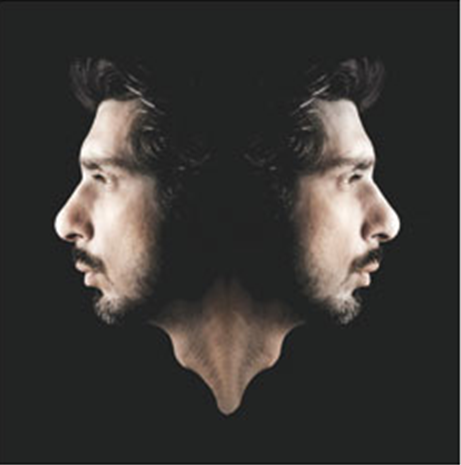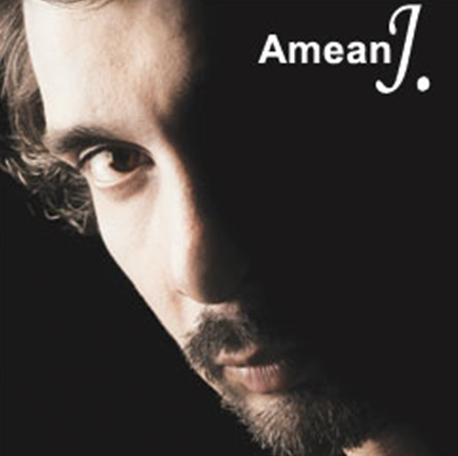Amean J.
This is a collection of articles archived for the excellence of their content. Readers will be able to edit existing articles and post new articles directly |
Amean J.
he rain maker
By Madeeha Syed
There are three things that become apparent when interacting with Amean J. — he has an almost uncanny knack for observing details, and not just visually. Even when it appears unlikely, a part of him will be aware of the minutest detail around him. It’s only when he makes a reference to it later on that you realise he was paying attention. Secondly, he has a tendency of including a bit of humor in his everyday conversation. It’s subtle enough not to make the joke starkly apparent, it’s like pulling someone’s leg with the other person realising it five minutes later.
Lastly, in a world where punctuality is two hours late, Amean exists to put it to shame: he is almost always on time. And he has no qualms about leaving on the designated event-ending time mentioned on the itinerary as well, whether or not the event itself has concluded.
“If I have done anything good in photography, it’s because I have really learnt it. I didn’t feel like I was a born Picasso and that all I had to do was pick up a camera and I was good to go. I worked my backside in trying to learn and made sure that I was getting enough exposure to see what was happening around the world,” says Amean J.
One of the rare ones to attain a formal education in his chosen art form, Amean has come a long way in the nine years he’s been a professional photographer, and has managed to make himself accessible in a way most media industry individuals haven’t: via the Internet. His web site, which showcases some of his work in the past year as well as a generous collection of portraits shot by him, is a favorite haunt of various writers, directors, art students and advertising professionals. It is also the place where Amean hosts the e-exhibition of his travelogue series.
His avid interest in technology shouldn’t come as a surprise considering that he holds a masters degree in media, culture and technology. “Imagine putting all three together,” he says talking about the programme, “Media, my interest in it has been there since forever. Culture, because you need to understand where you come from and where you are going to, and technology is all about tomorrow”. He goes on to explain that by exhibiting online, he surpasses geographical and time constraints which are predominant in physical exhibition of photographs in an art gallery. “Just by adding a couple of zeros, thousands of people can visit your site. They may or may not like your work, which is fine,” he pauses for a moment, “but when you go global not only do you end up getting very diverse feedback, but opportunities open up. If someone wants something from you, you’re just an email away.”
Having been a part of and/or hosted several exhibitions this year, Amean started off with +420 Berlin and then 15X4, followed quickly by Click Art. There was Articulating the Subtext where he exhibited a photograph on a 6ft by 6ft canvas, attempting to break boundaries in photography and crossing over to becoming a photographer painting. Depicting his photojournalism skills, he was also a part of an exhibition held by The Photographer’s Society of Pakistan, where he displayed his photographs of the Karachi Prison — all of which marked a very prolific year in the field for him. He is quick to point out, however, that it’s not over yet.
“I’m working in collaboration with Shamyl Khuhro (photographer) and Beena Khan (stylist) on something similar to what we did with 15X4 but very different. He’s photographing five people and I’m photographing the other five. Whenever I’m photographing, Shamyl’s documenting me, while he’s shooting, I’m documenting him. The whole project is Beena’s baby,” he says.
Not all of his projects have to do with photography, “I formed a society with a group of people called the Citizens Archive of Pakistan (Cap). On the 60th anniversary of Pakistan, we’re doing a four-day, large event in collaboration with Karachi Arts Council. There will be street theatre in the garden, formal performances in the auditorium, an art and photography exhibition and slide projections from old pictures from around the time of Partition.” Why call the group the Cap? “We brainstormed a lot as to what are we exactly trying to achieve. We’re told that a lot of PTV tapes have been lost, a lot of Radio Pakistan tapes have been lost or re-recorded on, we’re trying to archive everything from the time of Partition since the generation that was there at that time will not be around for too long — perhaps for another five to 10 years,” he explains.
Speaking of archiving, he had once toyed with the idea of working on a directory for media professionals. “I got together with a few photographers thinking that we need to put things in order. Everybody was busy and so I kind of took the initiative of naming it The Photographers’ Avenue.” Going on he says that it’s going to turn into a yellow pages of the industry. “If you are looking for a designer or a model, the contact will be there — there aren’t going to be any portfolios.”
Other than exhibitions, one recalls Amean working on a photo-book on cricketers. How far has that come along? “It’s called Man of the Match and 25 per cent of it is done already.” He goes on to reveal that there are other books in the pipeline. “We’re trying to get the 15X4 exhibition together in book form. Then there is Izdeyar Setna and myself who have been commissioned to document Mian Salahuddin’s work. He is a ceramist from Lahore who passed away several years ago and was the head of the department at the NCA. It’s scheduled for launch in August.”
With his online exhibitions centered round places he’s visited in the past and with his tendency to take time off to travel and explore yet another country, it doesn’t take a genius to figure out that Amean enjoys travelling. “I am planning to make a very adventurous train trip onboard the Siberian Express — starting from Moscow and ending in Beijing — with three other friends,” he says, excited about the journey. As expected, there will be an exhibition following it. “We are also debating on the idea of doing a little documentary on it called Kremlin to the Great Wall,” he adds.
Being an avid music listener and also having directed a music video in the past, is he planning to direct another one anytime soon? “I would love to do a music video again but I have not found an interesting piece of music that would have inspired me to do so. That is an avenue where I would like to bring my political satire. I can’t do so through photography and there is so much happening in the country right now.” Amean once confessed that had he not been a photographer, he would have liked to be a musician. What’s more is that his skills on the guitar are somewhat decent; perhaps he should try that on the side? “I cannot play professionally,” he protests. “I would have really enjoyed it if I could. I really enjoy western classical and opera. I like to learn things before I do them. I did take singing classes for a while, but I never thought of doing it seriously when I was a kid. I never did anything except to learn a few lessons on the piano and on the guitar.”
When he is not photographing, engaged in preserving the recorded heritage of Pakistan or trekking across the globe, Amean can be found coaching those who aspire to learn photography. Teaching part-time or being asked to conduct workshops, Amean describes his teaching methods as reflecting those of his mentors: “It’s not necessarily how you use the camera; it’s how you look and observe things around you. You pick up the camera, learn how to document and then you learn how to share. These are the four steps and as I’m not a fulltime teacher, I don’t end up going that far,” he says.
When it comes to photography, how does one learn to develop a truly unique style, different from what is predominantly used around you? “That has to do with two things: one is exposure and the other is education. If I have done anything good in photography, it’s because I have really learnt it. I didn’t feel like I was a born Picasso and that all I had to do was pick up a camera and I was good to go. I worked my backside in trying to learn and made sure that I was getting enough exposure to see what was happening around the world,” he says, adding, “and so when I pick these two things together, I am not copying anybody, I am trying to go into a different direction: inspired by other people’s work but knowing the technical side of it as well.”
It is clear that he feels strongly about the subject and suggests to aspiring photographers “save up some money and if you cannot go for degrees or short courses somewhere where they have a mature teaching process. And if you can’t do that, then practice because the more you do, the better you’ll be.” He finishes off by saying, “Photography is much easier now because it is easier to get exposure — it is just a click away. All you just have to do is browse.”

